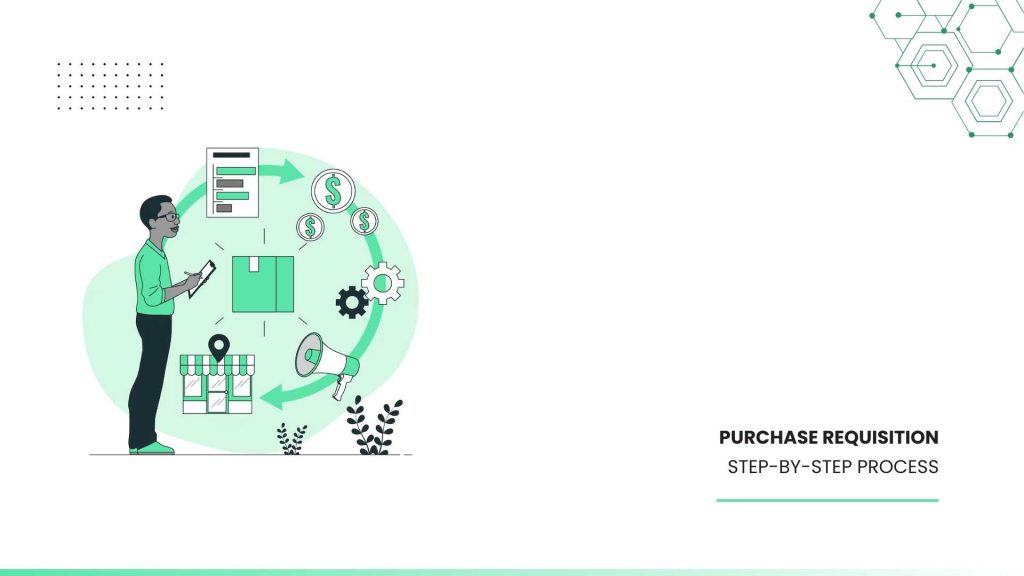Effortlessly navigate purchase requisition(PR) processes by understanding their definition, process, and best practices to improve procurement workflow efficiency. Every department is crucial for efficiency, and in procurement, the PR is essential for a smooth acquisition process. Let’s explore the significance of purchase requisitions and discover best practices for using them efficiently to streamline procurement operations.
What Is Purchase Requisition?
Within a company, a Purchase Requisition (PR) serves as an official document to initiate the acquisition process for procuring goods or services from an external supplier. An employee, in need of supplies or services, utilizes the PR as an internal request to the procurement department. It acts as a means to obtain permission and authorization for the purchase. The essential components of a PR include requester information, item description, justification, budget information, approval workflow, and supporting documents.
Purpose of Purchase Requisition
A purchase requisition is a document that effectively communicates the need for particular goods or services. It serves as a justification for the purchase and initiates the formal procurement process.
What data is usually contained in a purchase requisition?
- Requesting department and employee.
- Detailed report of the required goods or services.
- Quantity needed.
- Estimated cost.
- Preferred Supplier.
- Delivery timeframe.
What is the Approval Workflow for Purchase Requisition?
For a purchase requisition to be submitted, approval from department heads or managers is required, with the possibility of needing higher-level approvals based on cost or complexity. After obtaining all necessary approvals, the procurement department can proceed with further steps like procuring vendor quotes and issuing a purchase order.
Benefits of Purchase Requisitions
- Enhanced Control: Purchase requisitions guarantee proper authorization for purchases, preventing unauthorized spending and maintaining budget control.
- Transparency: Clear documentation of needs and justifications provided by PRs promotes organizational openness.
- Efficiency: Streamlined purchase requisition processes expedite the purchasing process and minimize unnecessary delays.
- Minimized Errors: Formalizing requests through purchase requisitions helps ensure the procurement of the correct items, reducing errors.
Purchase Requisition Process Step by Step
Here we have a detailed guide on how to create and handle purchase requisitions:
Step 1: Identify Needed
The need for a purchase requisition can be determined by considering factors such as inventory levels, upcoming projects, or requests from department stakeholders.
Step 2: Gathering Information
Collect all necessary details for the requisition, including item descriptions, quantities, preferred vendors, delivery deadlines, and budget codes.
Step 3: Complete Requisition Form
Fill out the purchase requisition form provided by your organization’s procurement department or use an electronic requisition system if available. Include all required information and attach supporting documents like quotes or specifications.
Step 4: Approval and Review
Following the established approval workflow, submit the requisition for review and approval. The requisition may need to be reviewed by department heads, budget managers, and procurement personnel before reaching final approval.
Step 5: Vendor Selection
Upon approval of the requisition, the procurement staff will choose suitable vendors based on factors such as pricing, quality, availability, and other relevant criteria. They may negotiate terms and issue purchase orders to the selected vendors.
Step 6: Order Processing
Vendors receive the purchase orders and begin processing them. Procurement personnel monitor the order status and coordinate delivery schedules to ensure timely receipt of goods or services.
Step 7: Inspection and Receipt
Upon delivery, the receiving department compares the shipment with the purchase order and packing slip, flagging any discrepancies or damages for resolution by the procurement team.
Step 8: Matching Invoice
Finance or accounts payable staff match the vendor invoices with the corresponding purchase orders and receiving documents. They ensure accuracy in pricing, quantities, and terms before processing payments.
Step 9: Authorized Payment
Once approved, invoices will be processed for payment based on the organization’s payment schedule and agreed terms with vendors, either electronically or by issuing checks.
Step 10: Keeping Record
Maintain detailed records of all purchase requisitions, orders, invoices, and receipts for audit and compliance purposes. An electronic document management or filing system can securely organize and store procurement documents.
Organizations can streamline procurement by managing purchase requisitions effectively to ensure compliance with policies and regulations.
Conclusion:
The cloud-based ERP system of Acumatica offers the ability to automate purchase requisition workflows. This functionality helps streamline the process of submitting requests and routing approvals, providing real-time visibility into the procurement pipeline.

Vijay comes with a vast experience in ERP and enterprise solutions space with about 20 years of experience in various packaged application like Acumatica, SAP, Orion, Salesforce.com, SugarCRM and, SalesLogix.

